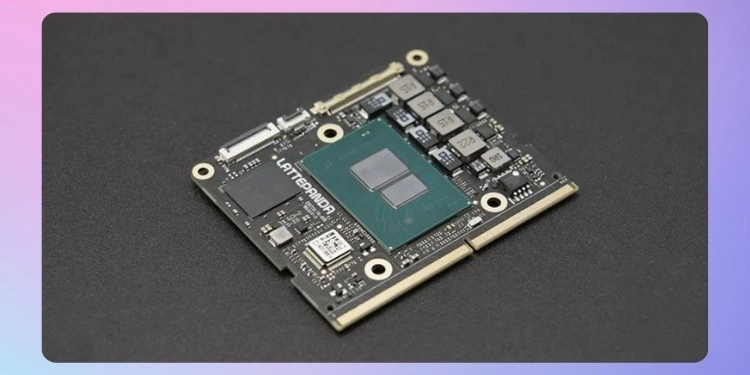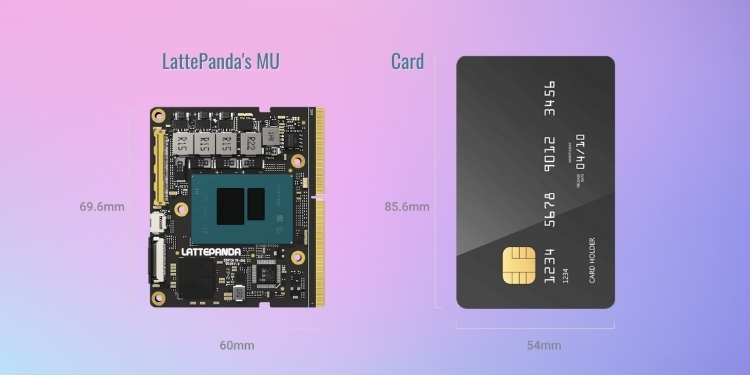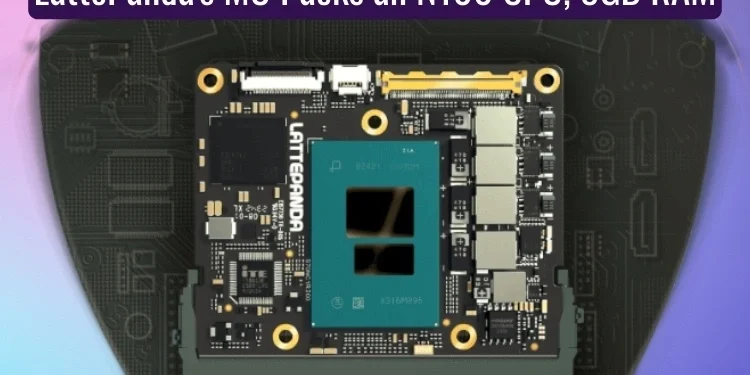LattePanda’s Minuscule MU Packs Powerful Performance in a Tiny Form Factor
At just 60mm x 69.6mm, the new LattePanda MU is barely more significant than a business card. Yet this minuscule micro x86 compute module packs surprising power with its Intel N100 CPU, 8GB of RAM, and ability even to run an Nvidia GPU.
LattePanda’s MU is undoubtedly their most miniature single-board computer yet. However, despite its diminutive size, the MU promises faster performance than the popular Raspberry Pi 5. With its Intel CPU and flexible expansion options, the MU delivers compelling capabilities in a remarkably compact design.
A Potent Pint-Sized PC
The heart of the MU is its 4-core Intel N100 CPU with a max turbo frequency of 3.4GHz. LattePanda claims this
“LattePanda Mu, which can run both Windows and compatible Linux operating systems, is faster than the Raspberry Pi 5”.
As shown in benchmark tests, the MU attains over 3100 on the multi-core Geekbench 6 test compared to just 1550 on the Pi 5. While arm-based boards continue to advance, Intel’s x86 architecture delivers higher performance in this application.
Beyond raw CPU power, the MU also stands out with its memory. It includes a generous 8GB of LPDDR5 RAM clocked at 4800MHz with error correction, as well as 64GB of onboard eMMC 5.1 for storage. These premium specs provide plenty of muscle for any workload.
Supremely Customizable
Where the MU truly shines is its limitless customizability. As a micro module, it offers a wealth of expansion through its carrier boards. Users can freely design carriers with the interfaces they need. Suggested designs incorporate dual Ethernet for a router or SATA for a NAS solution.
The MU’s expansion includes up to nine PCIe 3.0 lanes, letting users add powerful discrete graphics. In tests, the MU was seen running an Nvidia GPU, a rarity for boards this size. Its generous I/O also comprises three HDMI/DisplayPorts, eight USB 2.0 ports, and up to four fast USB 3.2 ports. LattePanda shares carrier board designs and libraries on GitHub, empowering developers.
With guidance and open-source resources, creating new solutions becomes much more straightforward. The potential is enormous to build ingenious tiny PCs tailored for specific tasks.

Image Source: LattePanda
Versatile With Variable Performance
Another advantage of the MU versus competitors is its flexible thermal design power (TDP) ranges from 6W to 35W. Users can select between passive and active cooling tuned for different workloads. The lower-power 6W mode runs fanless for whisper-quiet operation suitable for home or office use.
Or crank it up to the full-powered 35W profile with the included active cooler for peak performance. This maximizes the CPU and GPU capabilities. LattePanda even supplies firmware with varying processor speeds based on workload.
The MU is software compatible with Windows and popular Linux distributions like Ubuntu. Combined with its modular design approach, this allows enjoyable tinkering or serious production deployment.
A Cardsized Computer Kit To Customize
The basic LattePanda MU module sells for $139. Or get the complete development starter kit for just $190, including the MU, Lite carrier board, and active cooler. This affordable bundle removes barriers to experimenting with or bringing innovative projects to life. This versatile “card-sized, but packs an N100 CPU, 8GB of RAM, and can even run an Nvidia GPU” computer allowing for unlimited possibilities.

LattePanda MU Compared with Card
With its small footprint and modular, open-source approach, the LattePanda MU is poised to inspire all manner of creative embedded applications. Its surfeit of power in a miniature design holds great promise for personalization.
The flexibility to run Windows or Linux and customize the hardware presents opportunities to learn, discover solutions, and even start a business. For makers and tinkerers of all levels, the MU could provide a gateway to new frontiers of what tiny computers can accomplish.
In Summary,
The pocket-sized LattePanda MU module boasts surprising muster from its Intel N100 CPU. Its 8GB of RAM and optional discrete GPU make it more capable than competitors like Raspberry Pi. Where the MU truly stands out is its infinite configurability through user-designed carrier boards. It supports applications from routers to NAS to graphics-heavy tasks with options like SATA, multiple USB, and display ports.
Its variable 6W to 35W TDP further broadens use cases. Overall, the MU is an intriguingly powerful tiny PC that lets users fully customize both the hardware and software to their specific requirements through its modular open design. Those seeking flexibility and performance in an ultra-compact form factor will want to investigate the LattePanda MU.
Read also:



















